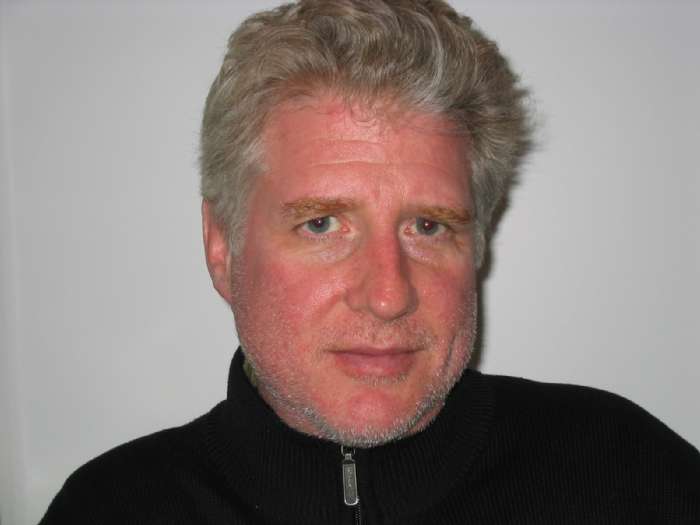Word comes from David D’Arcy that he’ll be back on the air, though not at National Public Radio. The top-notch arts reporter axed by, after Ronald Lauder’s minions at the Museum of Modern Art complained about an exposé of his they didn’t like, is to host a show on Los Angeles radio station KCRW on April 12 about art restitution, two-faced museums and the Holocaust.
 “It will be about the whole issue of the effort to recover the art stolen by the Nazi and the complications involved in that,” D’Arcy, left, tells me. He says he’ll report on “finding out where the art is, and then the greater complications of putting it back into the hands of the people from whom it was stolen
“It will be about the whole issue of the effort to recover the art stolen by the Nazi and the complications involved in that,” D’Arcy, left, tells me. He says he’ll report on “finding out where the art is, and then the greater complications of putting it back into the hands of the people from whom it was stolen
“What makes this important,” he says, “[is that] in a world of relativism people thought the Holocaust was a morally unambiguous subject. But when it becomes a fight over property, it does not bring out nobility.
“Looking at the MoMA case,” he continues, “you see most institutions have gone beyond the position of digging in their heels [to avoid returning the stolen art]. And you’ve got very few journalists who understand the restitution-of-art field, because it involves reading thousands of pages of court testimony. So what I would like to do is just bring out some truth that goes beyond the minimal amount of reporting that’s been done.”
Despite what happened to him at NPR vis a vis MoMA, about which the network and its ombudsman is in denial, D’Arcy hopes MoMA will participate in the program. I wouldn’t bet on that, although I’m told he has no intention of ambushing it or any other museum. He wants rather to give them a platform to explain their positions.
In any case, his firing has sent a chill through the mainstream media, as noted earlier. A recent column by Tim Rutten in the Los Angeles Times will bring you up to speed. (It’s been allowed out from behind LAT Calendar’s iron curtain for online non-subscribers.)
“What I think is really important about my situation is the story stood well on its own,” D’Arcy adds. “The correction [NPR ran under pressure] was misleading and unnecessary. And so I have strong feelings about the MoMA thing. The big problem in my case was that the correction falsified my story. It was a disservice to the listeners who seek information. I warned them not to run the correction. I sent them ample documentation so they knew it would be misleading and unnecessary. And now it’s up there [on the NPR Web site], and anyone who has followed this case knows it is false.”
Where exactly did the pressure to dump D’Arcy come from? One good guess might be Lauder himself. The Estee Lauder cosmetics heir is chairman of the MoMA board of trustees, an art collector with a special interest in Egon Schiele (whose painting “Portrait of Wally” is at the heart of the MoMA exposé), and he has taken contradictory stands about art restitution. D’Arcy has quoted Lauder on NPR, sometimes commenting skeptically about him, I might add, and he has written elsewhere about Lauder’s interests, not always kindly.
One of the many ironies in D’Arcy’s situation is this: He “was told that they [MoMA officials], with their lawyer, spent three hours pressuring the NPR editor about what they thought was wrong with [his] story. But they didn’t spend two seconds discussing any of these issues when [he] approached them for comment on the Schiele case.” Do the math. It’s just simple arithmetic.
